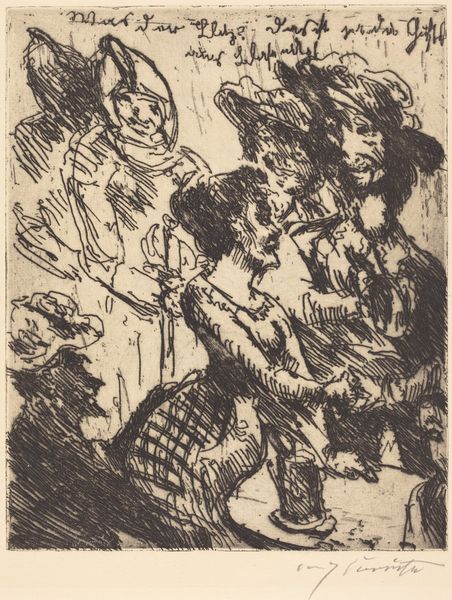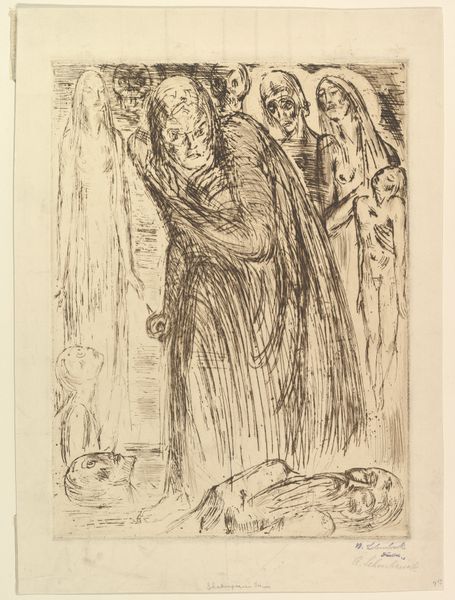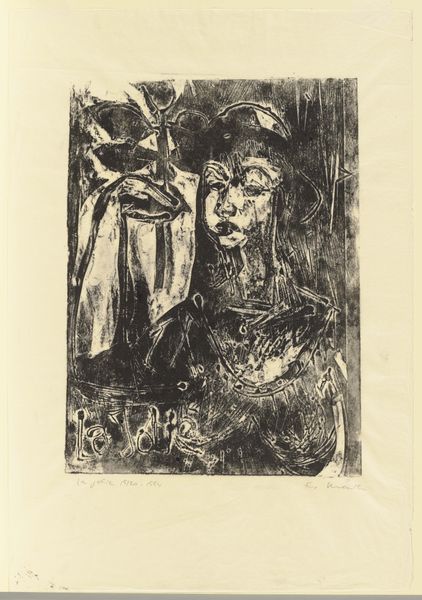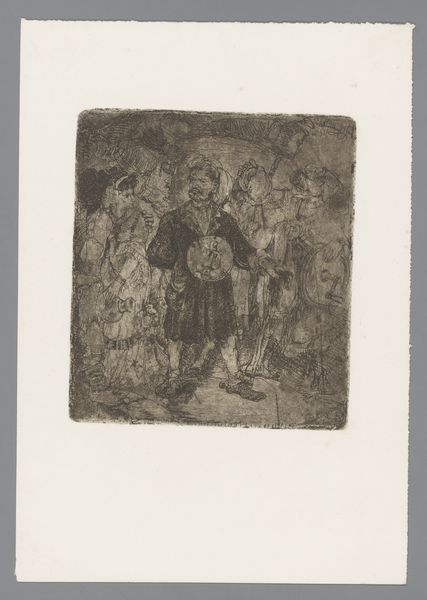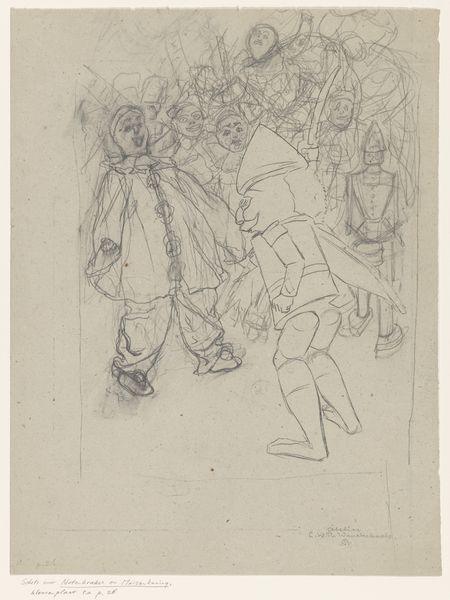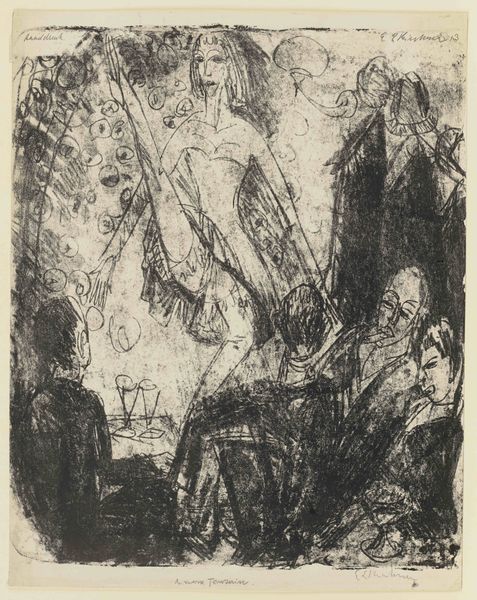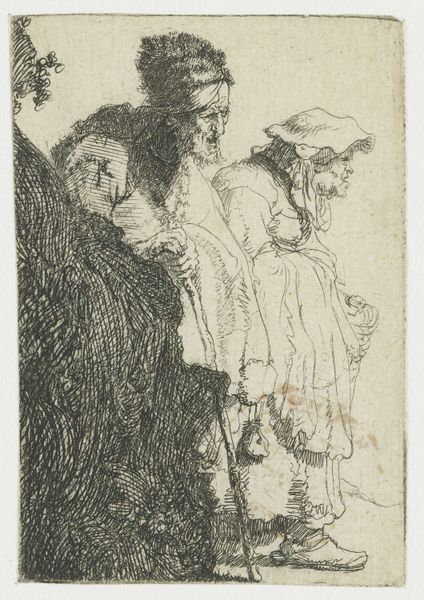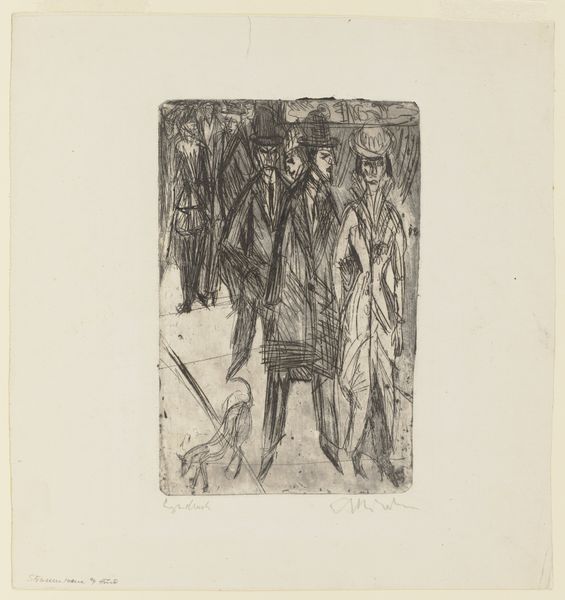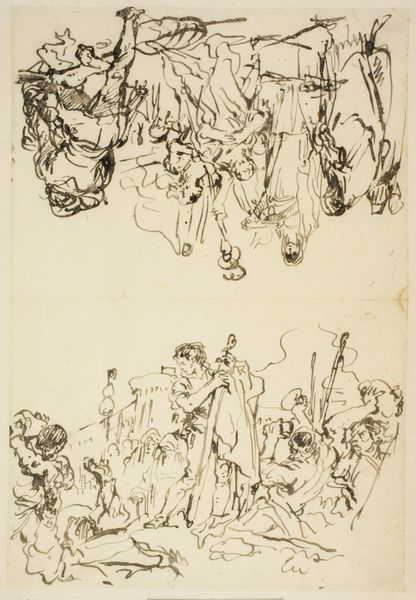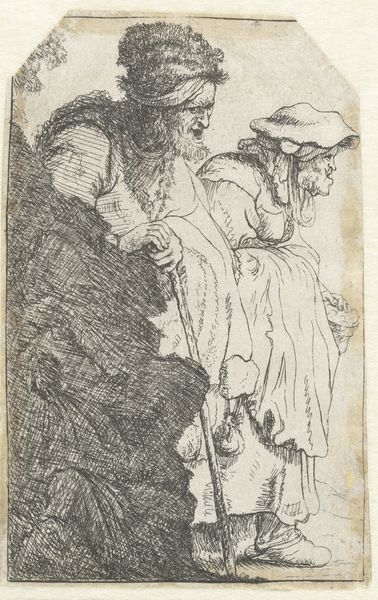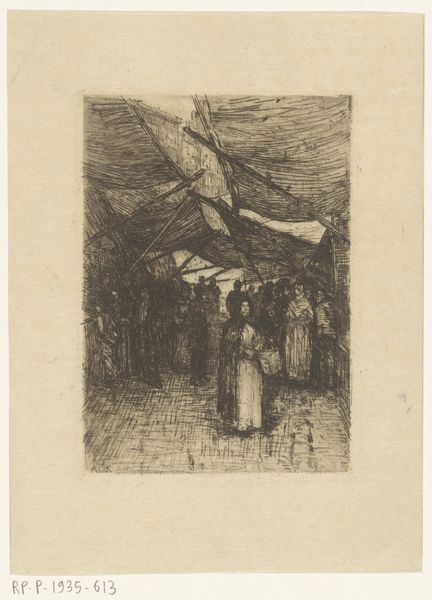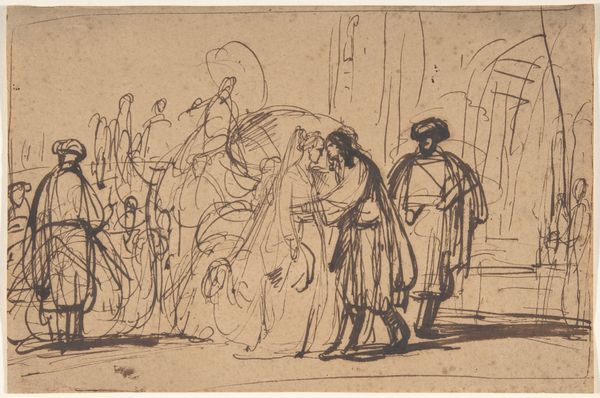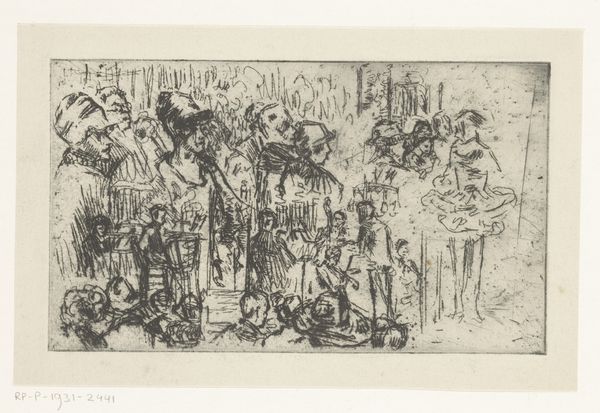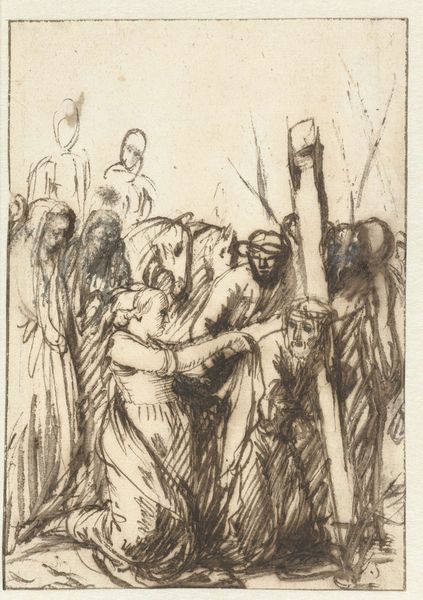
#
light pencil work
#
ink drawing
#
pen sketch
#
pencil sketch
#
personal sketchbook
#
ink drawing experimentation
#
pen-ink sketch
#
pen work
#
sketchbook drawing
#
sketchbook art
Dimensions: height 217 mm, width 162 mm
Copyright: Rijks Museum: Open Domain
Curator: Before us we have Henri Leys’ “Instelling van de Orde van het Gulden Vlies," created between 1825 and 1869. It’s currently held here at the Rijksmuseum. Editor: It has such a raw energy! Look at these hurried pen strokes, practically buzzing with life, as though he’s racing to capture a fleeting moment. Curator: Indeed. This piece offers a glimpse into a historical ceremony. The Order of the Golden Fleece, established in the 15th century, was an order of chivalry, embodying ideals of noble conduct and loyalty. Editor: The material process also highlights the culture surrounding the consumption and distribution of chivalric ideals during that era, how they still functioned within 19th-century Belgium. We’re viewing this now through a looking glass, via paper and ink. Curator: Exactly. The sketch-like quality suggests a work in progress, perhaps a study for a larger painting or a personal reflection on power, gender roles, and social structures prevalent within such orders. Editor: The visible pen work demonstrates that. I see repeated strokes to define form and shadow, hinting at the artist's process. Curator: Observe the diverse figures: nobility in their garments and the background faces that indicate commonfolk at this staged spectacle. It makes you wonder, how complicit are the background observers of a ceremony like the Order, a private members' club? What were the lives like of these non-elites in the social context of the time? Editor: The layering of figures, and the variation of pen pressures and forms, allows a visual weighting which helps to answer your questions. Curator: It’s a stark illustration of ritual and social standing within nineteenth-century European society, particularly Belgium, capturing both its allure and potentially hinting at the implicit social divisions of power in practice. Editor: The artist, through their focus on line and form and, in a way, reproduction by drawing, helps the contemporary viewer ask these questions by viewing the image, in turn. Curator: It highlights a moment of supposed grand tradition, a specific instance to investigate societal dynamics surrounding notions of hierarchy, allegiance, and privilege. Editor: The hurried ink lends a sense of immediacy that contradicts the stiff, controlled nature of the social ritual itself. Interesting juxtaposition. Curator: This quick study provides invaluable context for deconstructing performative societal conventions as we find them illustrated through pen work, allowing them to then reemerge over a century later in this setting. Editor: Precisely, highlighting that artwork isn’t solely about beauty or mastery; rather, it serves as a medium for material inquiry and process by both its maker, and the audience, for us.
Comments
No comments
Be the first to comment and join the conversation on the ultimate creative platform.
